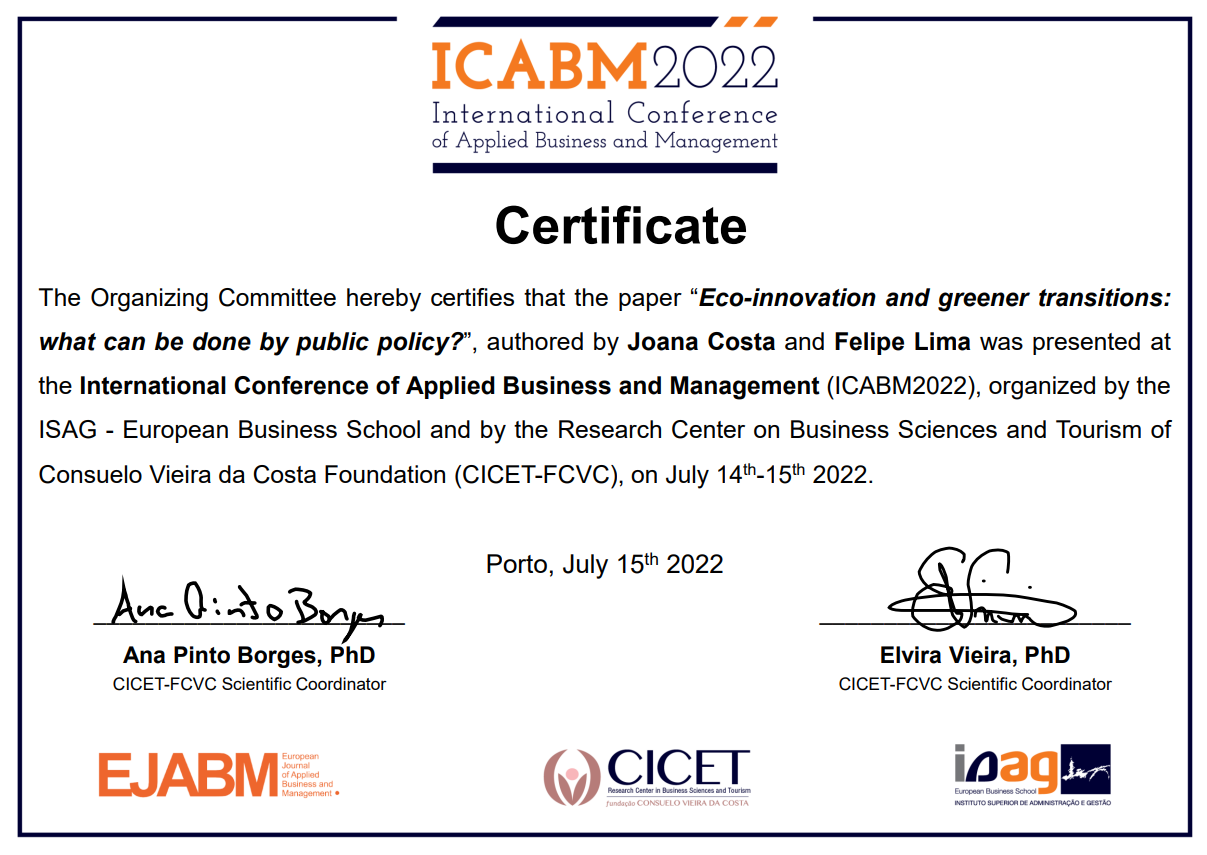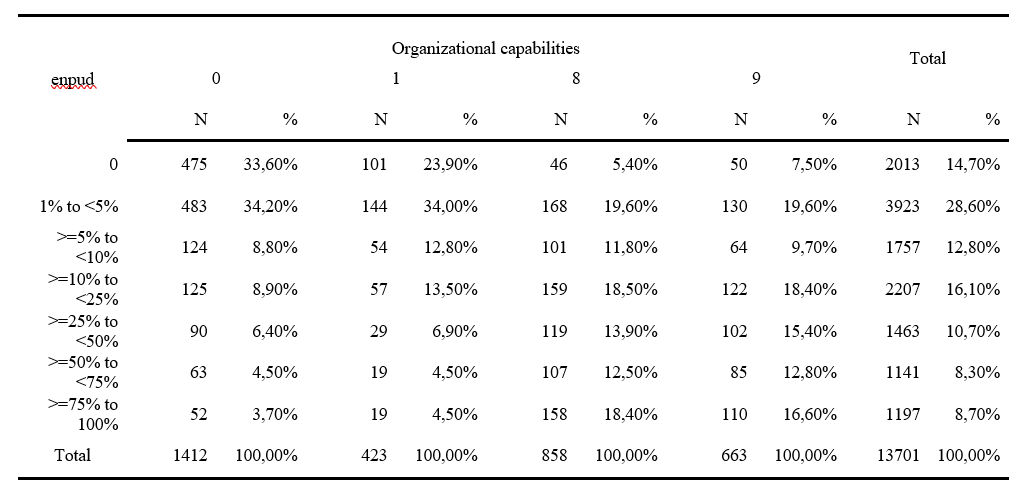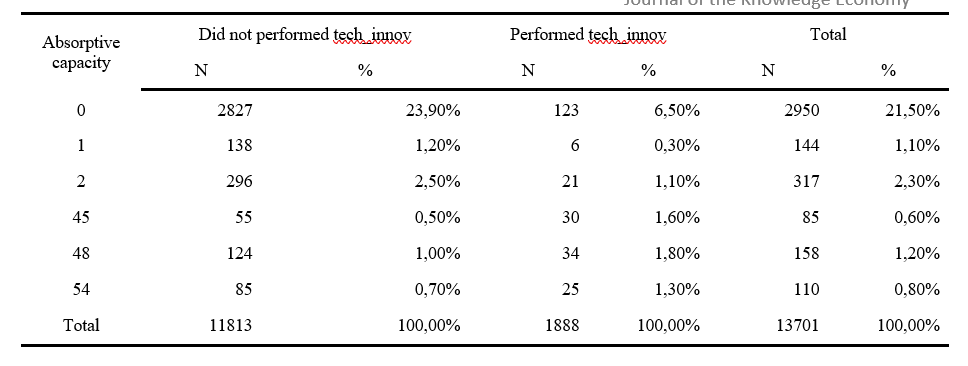
Eco-Innovations and greener transtitions: what can be done by public policy?
This analysis is a short part of a future publication that I´m working on, namelly the 'Eco-Innovations and greener transtitions: what can be done by public policy?", which was presented in the International Conference of Applied Business and Management (ICABM2022) (certificate in photo of the project).
Data
The empirical analysis relies on the Community Innovation Survey (CIS) 2018 from Portugal, encompassing the period of 2016-2018. The database includes 13701 firms operating in Portugal with heterogeneous structural characteristics and innovative profiles. This survey is the most comprehensive concerning innovation-related issues providing enlarged evidence for the relevant variables in use.
Exploratory analysis
This secction of the papers allows for the understanding of firm´s profiles as well as the descriptive analysis of the data, using the crosstab and frequency analysis in IBM SPSS.
Approximately 85,2% of the environmental regulations had no effect on innovative activities. In fact, this effect was felt the most by low technological firms (57,8%) and smaller firms (70,1%) contrasting to higher technological firms and larger firms. Moreover, this effect was the leading effect on all size and technological regime firms. As a result, the implementation of environmental regulations as been largely ineffective in innovative activities across all firms. Secondly, the second most important effect was as a promoter in the case of 8,2% of the environmental regulations, affecting once again mostly low technological firms (8,4%) and smaller firms (7,1%). In effect, this reflects the frequency of this types of firm characteristics on the survey, namely 57,9% in the case of low technological firms and 69% of smaller firms. However, in the case of scale intensive firms the second most important effect was as a barrier to innovative activities, corresponding to 8,1% to all scale intensive firms.
More than half of the financial support was given to smaller, and supplier dominated firms. Moreover, larger, and science-based firms were the least supported by local, national, or European institutions, representing only around 7% of total financial support given. Interestingly, specialized firms were the second most supported by subsidies, surpassing the scale intensive firms. Additionally, 78,5% of all firms that received financial support reported that environmental regulations had no effect on innovative activities. Moreover, 73,9% of firms that reported environmental regulations as a promoter did not receive any financial support and 75,1% of firms that reported as a barrier to innovative activities did not receive any subsidies. Furthermore, 78,5% of all firms that received subsidies reported no effect of environmental regulations on innovative activities.
As expected, most of the firms that did not innovate reported no effect of environmental regulations on innovative activities. However, the most reported effect of innovative firms was “no effect” on innovative activities, namely 69,4% for technological innovators and 75,6% for general innovative firms. Secondly, the most reported effect was as a promoter in the case of innovative firms, were 14,8% of all general innovative firms reported this type of effect and 18,9% of technologically innovative firms. Interestingly, the second most reported effect for firms that did not perform technological innovations reported a “promoter” role of this type of regulations, contrasting to firms that did not innovate were the “barrier” effect was the second most reported. In the case of technological innovations, 71,3% of the firms that receive subsidies did not performed technological innovations. However, 58,1% of those that received subsidies do perform general innovations. Moreover, most of the firms that did not receive financial support are not innovators, namely 89,4% for technological innovations and 70,3% for general innovations.
Regarding marketing innovations, 17,6% of the firms that performed marketing innovation reported a promoter effect of the environmental regulations on innovative activities, indicating the possible existence of the “green washing effect”.
When it comes to management efficiency, namely the analysis of both high share of qualified employees and the organizational capabilities of firms, it is possible to see that most firms with lower organizational capabilities are also the firms with lower share of high qualified employees. On the other hand, firms with higher organizational capabilities are the ones with a higher share of qualified employees.
Lastly, through the analysis of the absorved capacity of a firm (high qualified employees and organizational capabilities) and having performed technological innovations, it is possible to conclude that of the firms that performed technological innovations, only 6.5% did it without any type of high qualified employees and organizational capabilities. On the other hand, 23,9% of those firms did not perform any technological innovations. Consequently, of the firms that performed technological innovations, 93,5% had at least some form of absorve capacity.





